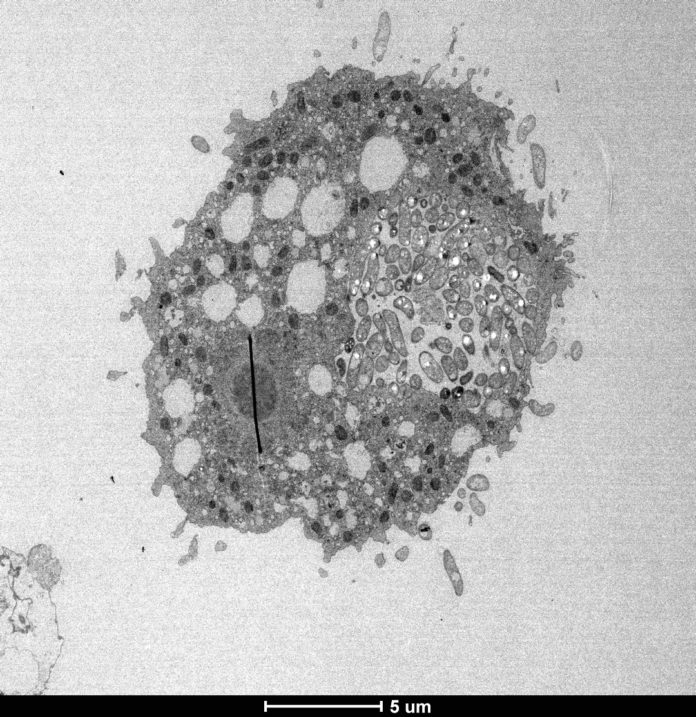Cholera is caused by Vibrio cholerae, a gram-negative, rod-shaped bacteria with a small bend in the middle and long tail-like flagella. V. cholerae looks basically like a bratwurst with a tail! Gram-negative refers to its thin cell wall, which is surrounded by a protective outer membrane.
In a new study by the EPFL scientists along with BioEM facility, scientists have deciphered the molecular mechanisms that V. cholerae uses to colonize aquatic amoebas. They found that the pathogen uses specific features that allow it to maintain its intra-amoebal replication niche and to ultimately escape from the succumbed host.
A few of these highlights, including extracellular proteins and motility, are viewed as minor virulence factors as they likewise assume a part in human sickness. The study suggests the aquatic milieu provides a training ground for V. cholerae and that adaptation towards amoebal predators might have contributed to V. cholerae’s emergence as a major human pathogen.
Melanie Blokesch at EPFL said, “We are quite excited about these new data, as they support the hypothesis that predation pressure can select for specific features that might have dual roles – in the environment and within infected humans, as studying the environmental lifestyle of the pathogen is a bit outside the mainstream research on pathogenesis.”
The study is published in the Nature Communications.
